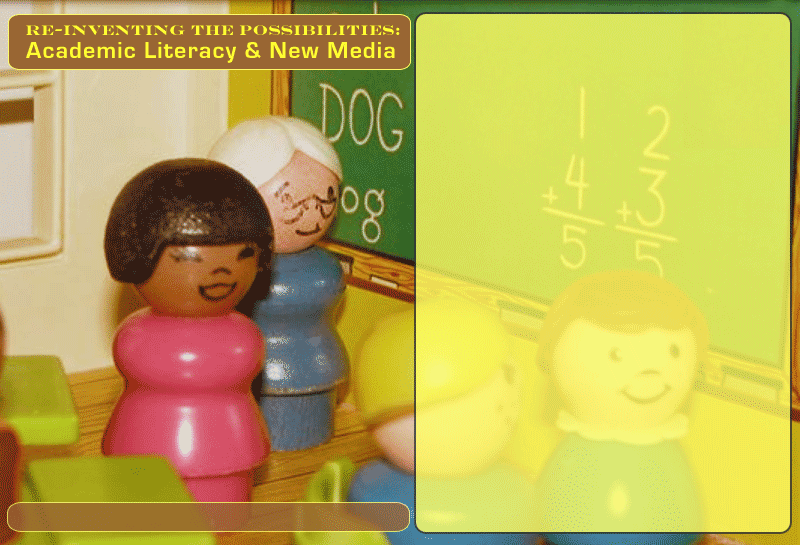
In this section, I describe a graduate, online course for Literature and Writing students and Technical Communication students. The final assignment—which was, in brief, to produce a persuasive new media text around a literary hypertext topic or discussion term from class—required the graduate students to navigate technological and subject-matter constraints while producing a text that could be akin to a "research paper/report." The project would be a critical-thinking response to a central point or topic from class, but composed in multiple modes and with digital media.
In this particular course, called Studies in Writing and Rhetoric, we focused on aesthetic multimodal and new media texts, starting with literary hypertexts like Joyce's afternoon (1989) and working up to texts like Miles' Violence of Text (2003) (although Miles' text was admittedly more scholarly than most of the examples we read that term, most of which were poetic in nature).
The final assignment was more media-intensive than the first two projects. I described it to the students in the following way:
I want you to design a text that reflects on one of the discussion topics, themes, readings, or words that has come up this semester. You might consider taking a stance on one of the terms 'medium,' 'text,' 'narrative,' 'materiality,' etc. This project should be exploratory (meaning presenting us with possibilities) and also, perhaps, persuasive (that means you are absolutely trying to persuade your audience of your stance...more like you are suggesting that your interpretation of X can be represented via new media in the way you design your text). This final project should be a multimodal text using images, video, screenshots, audio, soundtracks, and perhaps some written text, combined in a manner you see fit to present your ideas.
Students borrowed, made do, and collaborated with colleagues in unrelated programs to complete their final, new media projects. One student named Michael posted in the final project discussion forum: 'I really don't have any experience working with any of this stuff. So it'll be interesting, if nothing else, to see how the project turns out.'
I should note that I did not grade them based on how snazzy their use of technology was. It was more important in this experiment that they proved they understood the concepts of hypertext and new media. Still, many of the students produced incredibly technologically-sophisticated texts, including the student quoted above.
Go back to the last node.